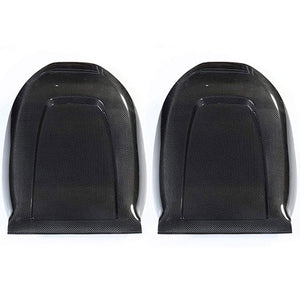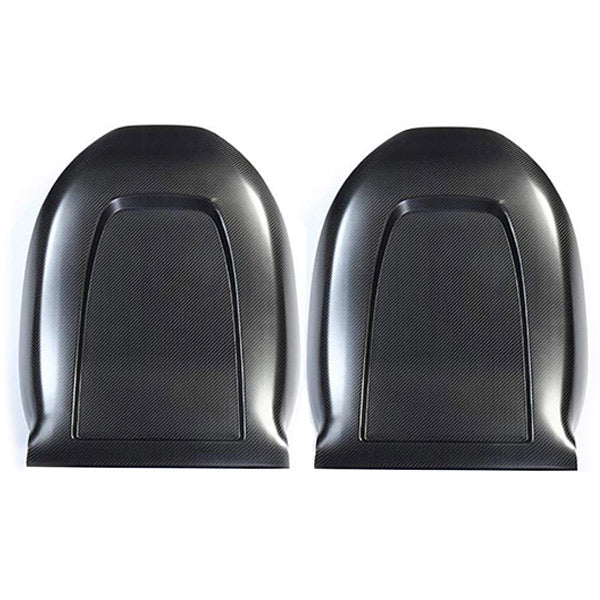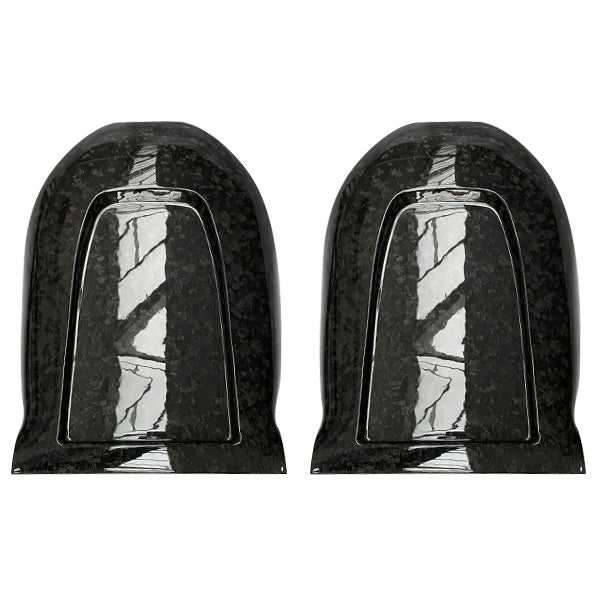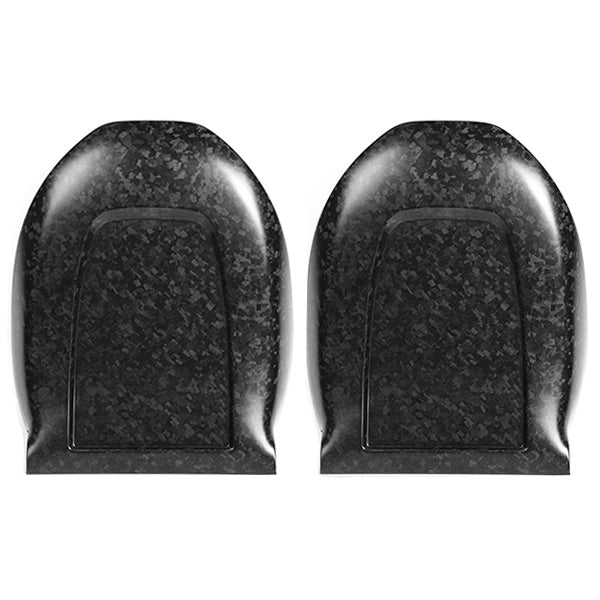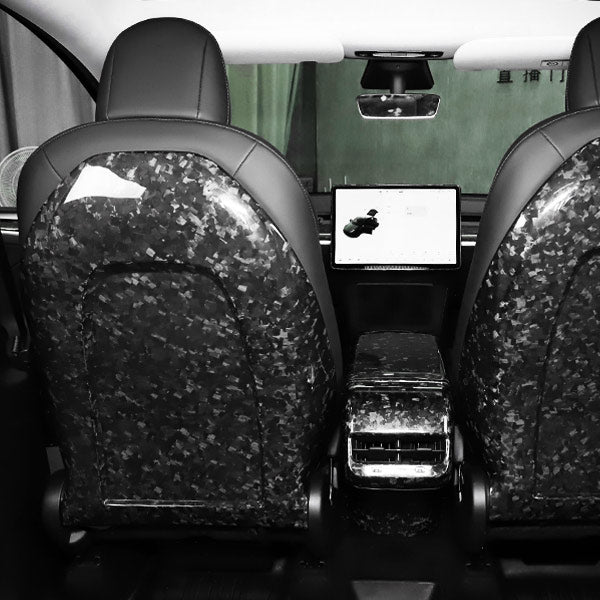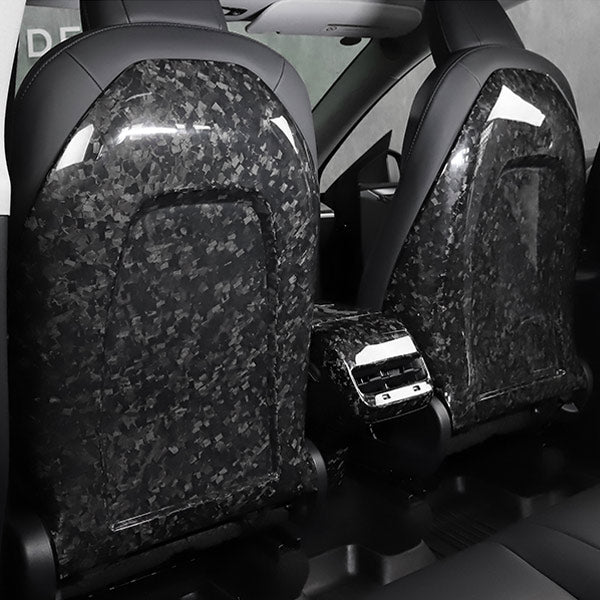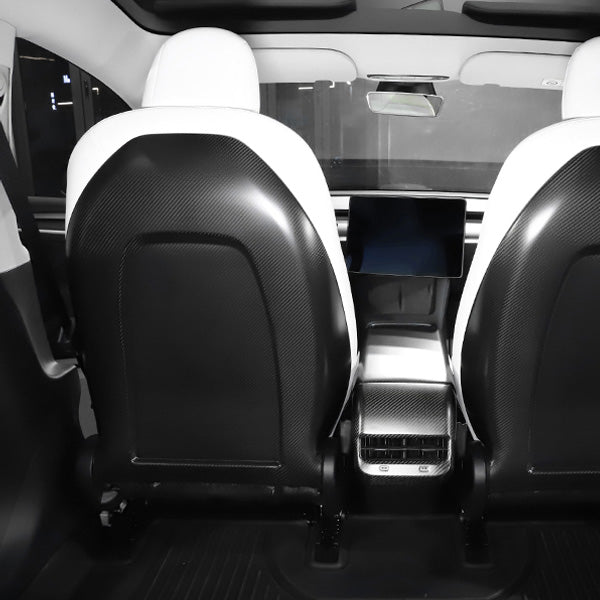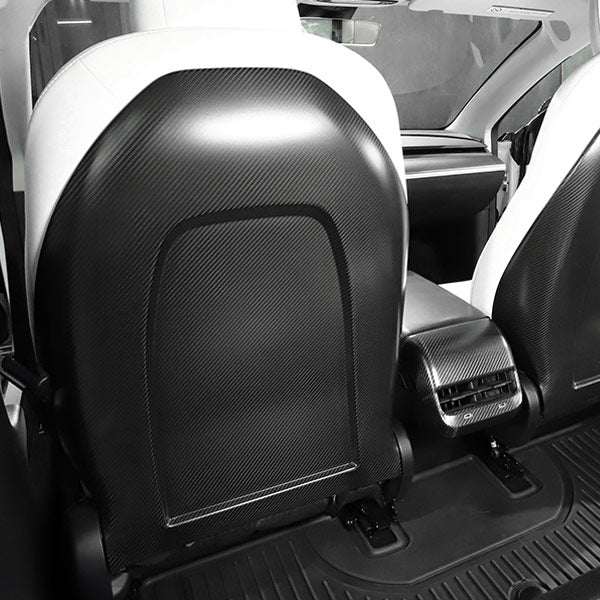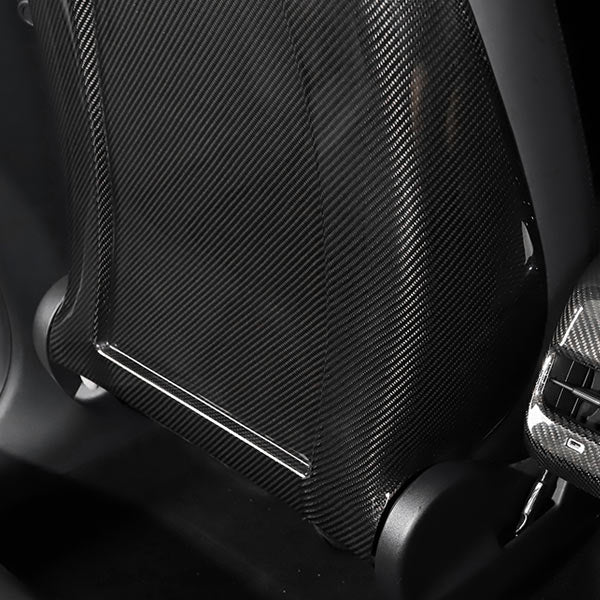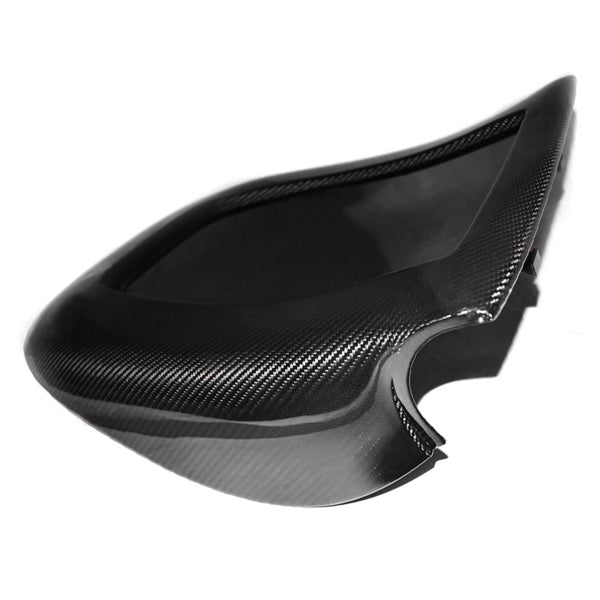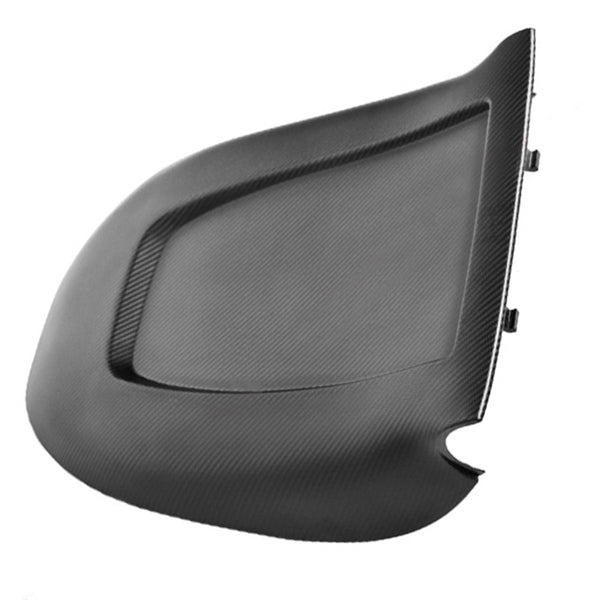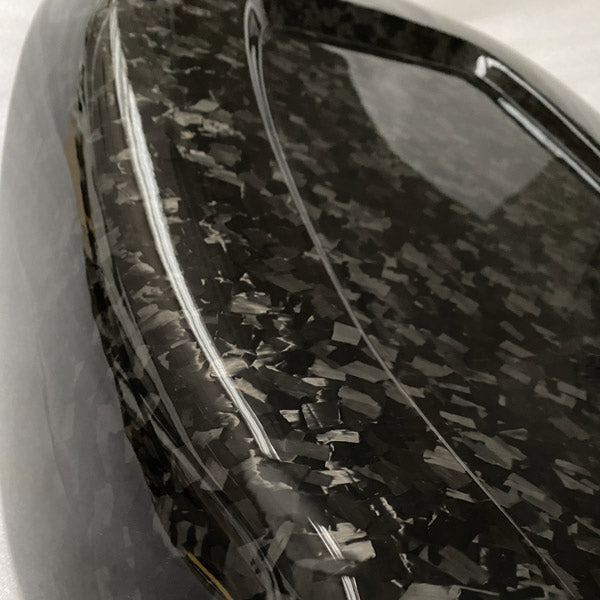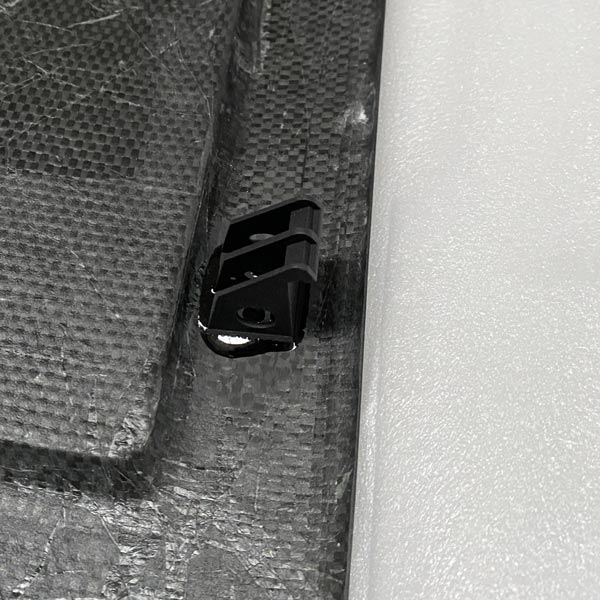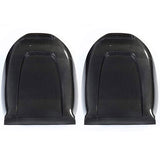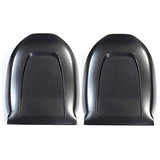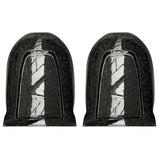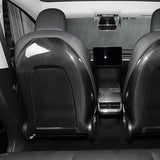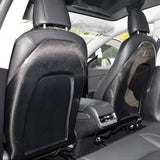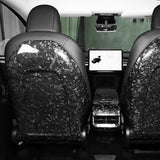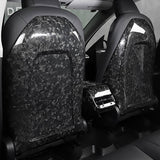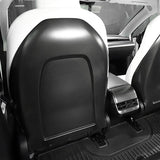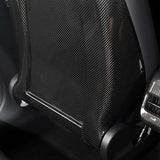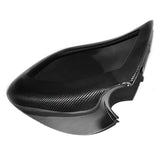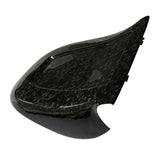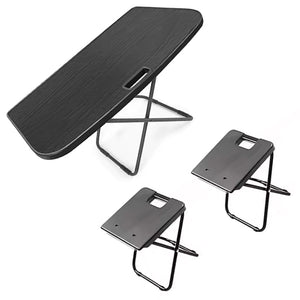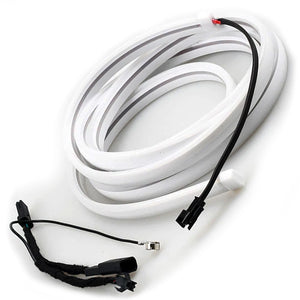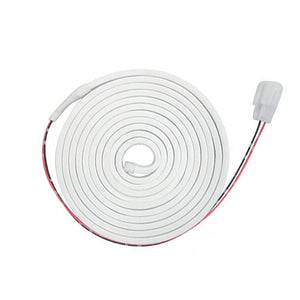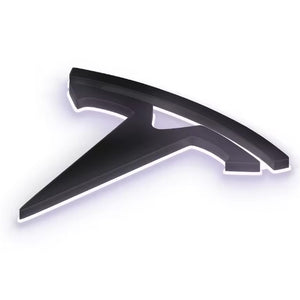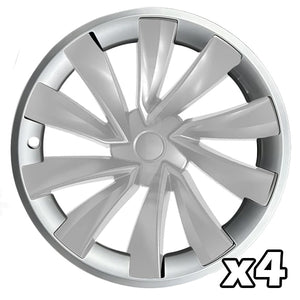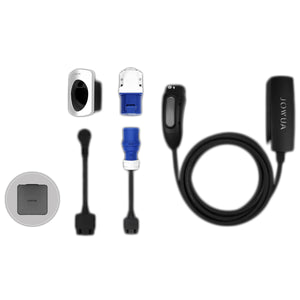Carbon seat back
Tesla Model 3 - Y
Unlike the backrest, the carbon seat back represents the entire rear part of the seat, which will replace the original plastic on your Model 3 or Y.
A lighter composition
The carbon fiber seat back for Tesla Model 3 or Y can be delivered in several versions:
3K twill carbon, matte or gloss finish, is the most standard carbon fabric used for automotive preparations. Its weaving will be positioned diagonally to highlight the depth of the carbon.
The forged carbon version, also in glossy or matt finish, apparently corresponds exactly to the rest of the Model Sport range.
Being a piece with a structural body, the seat back is made of 3 layers of carbon fabric and molded under vacuum: the Epoxy resin/carbon fiber ratio favors the lightness of the piece without losing resistance.
Characteristics of the carbon seat backs for Tesla Model 3 and Y
- Original design: changes the look of your Tesla
- Perfect finish: in real carbon
- Easy to apply: lift the head restraint to unlock the plastic part, tilt this same part backwards to remove it. Do the reverse procedure to mount the new carbon part
- Delivered in pairs: right and left
- Year of correspondence: Model 3 and Y version 2017-2020 and 2021-2023
-
2 year warranty
_________
What makes Model Sport carbon efficient? The role of a composite material in the automotive industry? The usefulness of a carbon part in the different industries?
We are going to make the explanation around three main singular parts:
• The true meaning of what is called a carbon element
• What makes Model Sport an experienced brand to work in the domain
• All improvements for your reference electric
You will be able to afford a carbon element with confidence.
What is a composite material?
By characterization, what is called composite material describes the assembly of two components together, which do not mix, but produce an object that is more resistant to shocks/impacts/torsions/flexures than if they were used independently l each other.
Typically, you can take reinforced concrete as an example.
What type of carbon or Texalium for your Tesla?
What we can mention is that many carbon or Texalium parts exist and that many ways of presenting it in your vehicle are possible.
A distinction must be made which will be important for purists: what is commercially nicknamed "carbon" actually has the name "carbon fiber composite", it is important to know in the world of lamination it is this designation that is used.
200 gram 3K twill carbon membrane:

Let's start our development with the most popular of all: 3K carbon twill. Twill is a name that defines the internal structure of the intermeshes of the carbon wefts.
The figure above is just there to give you an example of this. One of the arguments for the intensive application of twill is undoubtedly its workability: it is able to take the shape of almost any structure.
That said, we will not detail the type of intersection in 3/1, 2/2 and 4/4. The abbreviation "3K" means that 3000 carbon filaments are part of a single frame.
Please note an illustration that will give you an idea of the thickness of a strand of carbon: it suggests about 1/20th that of a hair. To designate and mention the most common types of carbon used in the various fields of industry, we must mention 1K, 3K, 6K and 12K.
For Tesla vehicles, we particularly appreciate 3K. 200gr/m² evokes that the carbon fabric, before its conjugation with the resin, weighs 200 grams for a tablecloth of 1 meter x 1 meter. For the Tesla community, 3K twill in 200gr/m² is the most appreciated for its aesthetic appearance, which is considered much better than its counterparts, but not for its mechanical endurance properties.
The unknown in its class: forged carbon:
Note that this is a molding process that is in no way innovative, but that this qualification has a name that suits it.
The "forged carbon" technique is actually very simple and ingenious: the carbon fiber is cut into small pieces and then placed in the mould. It is now necessary to put the resin and tighten the positive and negative master of the mold until they are under compression. The temperature of the mold is also increased during this phase.
Why use this production method?
Quite simply to allow more carbon to be integrated for less resin. All the overflow of resin is evacuated during the pressurization phase. So you get a stiffer and lighter part.
Lamborghini is the pioneer in the automotive world to have used the latter. Note all the same that its appearance and use has been present since the 80s concerning the production of missile heads.
Texalium, the unusual:
Texalium is a completely different material, generally mistaken for carbon by amateurs.
It is in order to acquire the desired appearance that this material is actually fiberglass loaded with aluminum, the resin or the varnish will then be tinted to give it a specific color.
An entirely decorative application for this finish, because its mechanical provisions are less compared to simple glass fabric (which itself is below carbon). Know that Texalium is a material that has existed for years, but is little used in France. It is also much more widespread and on the Atlantic side.
Carbon: what does it look like?
With carbon fiber, what exactly is it possible to develop?
If you are interested in a product or part, Model Sport can provide you with a quote.
Can carbon be subjected to high loads?
An oft-mentioned question, perhaps in the wrong way, but rightly so. The real question will be whether carbon is more durable than another material.
To give you an idea: an aluminum alloy that has a physical volume equal to a carbon part will be less durable than the latter, all constraints combined. It is important to come back to the term “resistant”, because it means everything and nothing.
Because an aluminum part will perhaps behave better during impact, which will depend on the weaving used for the carbon in comparison. It is for this reason that we find such fine parts for the Tesla brand.
The dashboard insert for the Model Y or 3 is worth mentioning: this element is only useful for its aesthetics (like most carbon elements for Tesla). Only two layers of carbon fabric are used to manufacture a 1.40m long piece, which will be sent without worries to France or other neighboring countries.
Carbon fabric and its purchase price?
To understand its final price, you must first understand its production: The technique of shaping a carbon weft is already quite complicated.
The most used is from a synthetic fiber, polyacrylonitrile, which will be oxidized and calcined to give us the famous carbon fiber. It is a totally chemical and very energy-intensive transformation. Be aware that this race for ecology gives rise to many projects to continue to use carbon fiber for its lightness, while guaranteeing production without chemicals.
The use of bio-sourced materials is fashionable and even more and more essential to meet certain environmental criteria put in place. The goal: the elimination of chemicals, but also a division of the price.
The carbon production operation also requires expensive and bulky specialized equipment, not to mention its weaving. Keep in mind that compared to a human hair, a carbon fiber is 20 times thinner.
In terms of price, to give you an order of magnitude, the square meter of 200gr/m² 3K twill carbon fabric costs around €30. Added to this are the number of layers and the price of the resin, which is not equivalent in quality and price. We also need a laminator with knowledge of laying carbon materials.
The peculiarities of the carbon of Tesla Model Sport
We follow and prioritize all the stages of development of our carbon components, so let's get to the most essential part.
You have to turn to François SPITALS, the creator of the Model Sport brand, to find the experience necessary for the development of carbon parts.
A carbon weave or a laminated version?
The surprising mechanical properties of carbon are deliberately forgotten for its visual aspect in the world of aesthetic evolutions of our vehicles. We regularly talk about endurance to torsion and bending, however, on a Tesla, these faculties will be forgotten.
These are elements aimed at conveying the sportiness of the American brand. The constraints will be largely cashed on the Model S, 3, X or Y equipped with a body kit, even if it uses low-end carbon (i.e. it is difficult to produce so-called "poor quality" carbon). ").
Moreover, the most used category, even the most standard, is the HR, for "high resistance", which is very noted for its versatility and its capacity for flexibility. It is specifically this type of carbon, HR, which is used by Model Sport for the production of all its parts.
It differs from HM (High Modulus) which will certainly be lighter, but also much more brittle, so much so that it almost always has to be combined with HR. The reference we can provide concerns forged carbon: it is regularly used for its configuration, however its primary purpose is unconventional resistance.
What is the best resin to use?
This is THE most crucial difference that the carbon parts of Model Sport can boast of having, an epoxy resin making the difference. Polyester-type resin is commonly used for mass lamination on fiberglass parts.
This is also prioritized on carbon parts which require high heat resistance. You will find it in the manufacturing process of motorcycle exhaust canisters.
As regards the production of carbon parts subjected to potential loads, the Epoxy resin will provide the entire composite material with greater endurance. The anti-UV resin is still a step above: no yellowing in the long term.
This is why we use this type of product. In addition to having a more transparent appearance, the anti-UV Epoxy resin will not be affected by the effects of the sun.
This is a specificity that will be felt for a multitude of years after installation, but if the anti-UV treatment is not present, beware of yellowing of the parts. The appearance may be perfect when putting the piece together, but as soon as summer comes in full force, it will gradually dull and become opaque.
The behavior over time is a determining factor in knowing the price of a resin, as is its quality of production and its field of application.
Let's talk about the selling price of this famous resin in France:
• 8 to 10€ for the kilogram of Polyester resin
• 1kg of Epoxy resin = 50 to 60€
• 55 to 65€ for the kilogram of anti-UV Epoxy resin
The final varnish applied to the carbon parts
The finishing varnish is the last essential touch in the production of carbon parts. We are so meticulous that the initial project was to mass-produce carbon parts that did not require finishing varnish. So once out of the mould, they had to be perfect.
The ambition of the Tesla brand being to reduce pollution and waste, it was a counterproductive idea to get so much waste. To obtain a more "standard" result in the manufacture of our carbon components, we have therefore started to use a higher quality varnish.
The glossy varnish is finely polished before shipping and the matt varnish applied delicately to have a uniform appearance over the entire piece.
The carbon fabric on the Tesla Model S and X
Although many elements are corresponding in the two versions, there are some differences between the years.
Don't be surprised to receive a call after ordering to find out the year and month of registration of your vehicle.
Tesla S or X interior trim
A real carbon tuning is also possible for the Model S and X even if they are less numerous than the Model 3.
Inserts such as for the dashboard, the central console or the part of the cup holder. One of the main components of your Model S or X is undoubtedly the steering wheel.
This can be personalized to infinity, in twill or forged carbon, shiny or matte and leather or Alcantara trim. The latter will have a fairly precise customization, which many other accessories will be able to benefit from in the future.
Model S and X exterior features
As for the Model S, the first element considered is the performance-type Spoiler. In its matte version, you will have the same appearance as the one present on the Performance versions of the Model S, with the difference that the Model Sport has a different bonding surface and internal structure.
This change is subtle, so much so that it won't be visible once the spoiler is installed, however these details make all the difference. At the time of writing, the Plaid version of the new Model S is also being manufactured.
Smaller components such as the mirror caps or the grille can benefit from a full carbon finish. Although 3K twill carbon is the most common, more "exotic" elaborations such as Texalium may be the subject of a study, in this case contact us by phone or email.
The Model 3 and Y: perfect bases for carbon creations
The advent of carbon in the Tesla world has actually appeared since the launch of the Model 3.
Share a lot of common points with the Model Y, let's see what you can find more on them.
Model 3 and Y and their interior improvements
We can't talk about Model 3 and Y without mentioning the carbon inserts, which have become part of the Tesla culture. Producing such a thin element in large quantities while maintaining a similar quality is a technological feat. Each insert must be able to be installed without giving an "addition" effect. The inserts find here all their interest and their manufacturing quality.
The door, dashboard and other center console trim required a number of different trials to find the right method and the right mold to produce these inserts of incomparable quality. The keys to a quality insert lie in precise cutting and precision gluing.
Replacement elements such as the carbon dashboard combined with the door trim will give your vehicle a real finish in the chosen material. For the most demanding of you who like beautiful parts with meticulous manual work, the carbon dashboard and door trim will satisfy you.
The body components of a Model Y or 3
The bodywork of the Model Y or 3 is not to be outdone with a good number of possible carbon-based tune-ups. In a gloss or matte finish, with 3K twill or forged carbon, you can transform your entire Tesla.
One of the most popular components and undoubtedly the Performance spoiler in its matt version. For Model 3 or Y, it will always have a benefit compared to other carbon parts.
Having become almost a standard in the Tesla world, it will stick directly to the edge of the trunk. In addition, you can order larger modifications such as the replacement of the real carbon bonnet. Not only will this allow for weight loss, but will give the car a unique style.
- 🇫🇷 Gestionnaire Français
- Commandez directement au Fabricant ou au Distributeur
- Payez que votre produit (pas de frais de stockage ni de taxe territoriale)
- Livraison dans toute l'Europe !
Vous remarquerez que le bouton au-dessus vous redirige vers un des distributeurs ou fabricants du produit.
La major partie des accessoires Tesla proviennent de Chine, commander via les plateformes Aliexpress, Alibaba, Amazon, Hansshow ou Jowua vous donnera la possibilité d'obtenir le produit sans intermédiaire.
Les produits vendus en France ou en Europe proviennent du même fabricant Chinois (ou autre), mais avec une marge supplémentaire servant à payer les frais de fonctionnement de la société.
Cependant, l'avantage de commander à proximité est d'obtenir un délai de livraison plus rapide (néanmoins nous proposons aussi des produits expédiés directement depuis des stock Français ou Européens)
Model Sport a initialement commencé en faisant du stock en France, nous connaissons donc quels sont les fabricants de confiance et leur méthode de travail. Si bien que nous les citons avec leurs accords : MAOFA, BFB carbon, Yute Technologie, DCR Tuning, LITA Accessories, Jogon, Ever carbon, Carbonss Tuning, Jowua.
Ces fabricants, parmi quelques autres, sont les plus actifs et sérieux dans leur qualité de fabrication. Nous vérifions que les produits proviennent systématiquement de notre liste de fabricant. Ainsi, que vous commandiez via un distributeur Aliexpress, Amazon ou autre, nous savons que le produit sera de bonne facture.
